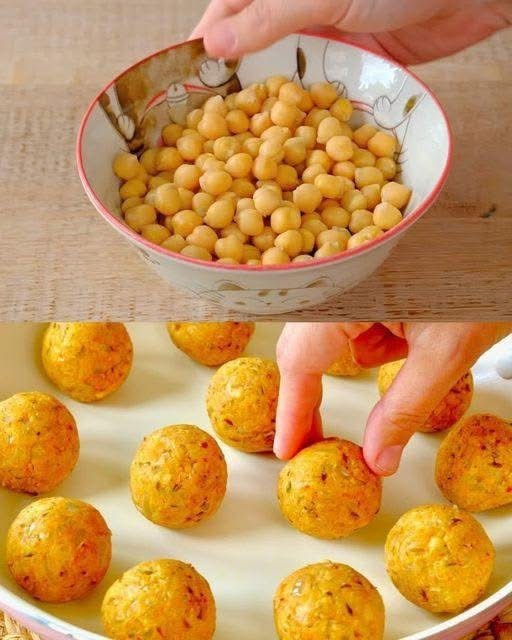Falafel The Golden Delight of the Middle East

Introduction
Falafel is a traditional Middle Eastern dish made from ground chickpeas (or fava beans), herbs, and spices. Shaped into balls or patties and deep-fried to a crispy golden brown, falafel is a beloved street food and a popular vegetarian option worldwide. Its irresistible taste and crunchy texture make it a favorite for both vegetarians and meat-lovers alike.
History
Falafel has deep roots in Middle Eastern cuisine. It is believed to have originated in Egypt, possibly eaten by Coptic Christians as a replacement for meat during Lent. Over time, falafel spread throughout the Levant, becoming a popular street food in countries like Israel, Palestine, Lebanon, and Syria. Today, it’s enjoyed globally and often found in wraps, pita bread, or salad bowls.
Ingredients
Here are the core ingredients for traditional falafel:
- Chickpeas – 1 cup dried (soaked overnight)
- Onion – 1 medium, chopped
- Garlic cloves – 3 to 4
- Fresh parsley – 1 cup, chopped
- Fresh cilantro – 1 cup, chopped
- Ground cumin – 1 tsp
- Ground coriander – 1 tsp
- Salt – to taste
- Black pepper – to taste
- Baking soda – 1/2 tsp (optional, for fluffiness)
- Flour – 1 to 2 tbsp (as a binder if needed)
- Sesame seeds – optional
- Oil for frying – vegetable or sunflower oil
Instructions & Methods
1. Preparation
- Soak the Chickpeas: Soak dried chickpeas in water overnight or for at least 12 hours until they are soft and doubled in size. Do not use canned chickpeas.
- Drain: Thoroughly drain the chickpeas before use.
2. Blending the Mixture
- Combine Ingredients: In a food processor, blend the soaked chickpeas, onion, garlic, parsley, cilantro, cumin, coriander, salt, and pepper.
- Blend Until Coarse: The mixture should be coarse, not a paste. You should be able to form it into a ball.
- Add Flour/Baking Soda: If the mixture is too loose, add flour. Baking soda can be added for a lighter texture.
3. Form the Balls
- Scoop tablespoon-sized portions and shape into balls or patties.
4. Frying
- Heat Oil: In a deep pan, heat oil to 350°F (175°C).
- Fry Falafel: Fry a few at a time until golden brown and crisp, about 3-4 minutes.
- Drain: Remove and place on paper towels to drain excess oil.
Nutritional Benefits
Falafel offers several nutritional advantages:
- High in Protein: Thanks to chickpeas, falafel is a great plant-based protein source.
- Rich in Fiber: Helps in digestion and keeps you full longer.
- Iron & B Vitamins: Great for vegetarians missing out on meat-based nutrients.
- Low in Saturated Fats: Especially when baked or air-fried.
Formation & Serving
Falafel is incredibly versatile:
- In a Wrap: Stuffed in pita with lettuce, tomatoes, cucumbers, and tahini sauce.
- Falafel Bowl: Served with quinoa, hummus, and fresh vegetables.
- As Appetizers: With dipping sauces like tahini, yogurt, or hot sauce.
Lovers of Falafel
Falafel is adored worldwide:
- Vegetarians & Vegans: A perfect protein-rich meat substitute.
- Middle Eastern Communities: A cultural and nostalgic staple.
- Health Enthusiasts: Loved for its nutritious profile when baked or air-fried.
Conclusion
Falafel is more than just food—it’s a cultural icon, a vegetarian favorite, and a flavor-packed bite of history. From its humble Egyptian origins to being a global favorite, falafel continues to be a symbol of delicious, healthy eating. Whether you’re a seasoned falafel lover or a curious newbie, making it at home is a rewarding culinary adventure.